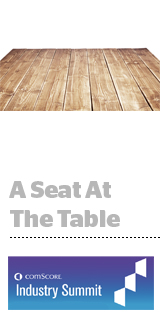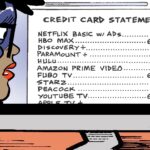 Creatives deserve to be part of the conversation around programmatic media. The fact is, they’re not.
Creatives deserve to be part of the conversation around programmatic media. The fact is, they’re not.
“There are no true creatives in this room – and that’s a major silo,” said Steven Wolfe Pereira, VP of brand strategy and marketing solutions at Oracle Data Cloud, at the comScore Industry Summit on Tuesday. “Creative people are not talking to data people and technologists.”
But that, according to IAB President and CEO Randall Rothenberg, may change as programmatic evolves.
“Programmatic will increasingly require deep, intense collaboration between the creative agency, the media agency and a whole bunch of other suppliers,” Rothenberg said.
The benefits are many. When data and creativity dance, agencies can create niche content for niche audiences, craft resonant content for large audiences, develop dynamic messages for different stops along the cross-channel customer journey – and tweak campaigns on the fly.
IPG Mediabrands has the right idea. IPG recently hired Mat Baxter as global chief for strategy and creative to help redefine the media agency’s role through a combination of creative thinking and data-driven strategy.
But the challenges are real. Beyond the departmental silos that keep like with like, “big brand marketers are not designed to be nimble enough to take data and inform their insights and the creative process,” said Jon Suarez-Davis, chief marketing and strategy officer at Krux Digital.
It’s not just a nice-to-have thing, though. The uptick in ad blocking is arguably proof that chronically bad ads aren’t going to fly.
“It’s incumbent on us as an industry, as publishers, advertisers and creative agencies, to make advertising useful, relevant and entertaining from a consumer standpoint – that’s the bar we need to hold ourselves to,” said Neal Mohan, VP of display advertising products at Google.
Some advertisers are moving in that direction. Take creative shop Ogilvy & Mather, which was a top contender for Coke’s media business at the height of pitchapalooza in June. Coke ultimately settled on UM as its lead media agency for North America, but the brand plans to use Ogilvy for some of its future media strategy projects.
That makes sense, said Wolfe Pereira, pointing to the growing “shift from media planning to audience planning.”
“Creative agencies know audience,” he said. “We’ll see a lot more creatives have a bigger seat at the table.”
But simply inviting creatives to the programmatic party is not an immediate panacea. “Ninety percent of data is crap,” Julie Fleischer, senior director of data, content and media at Kraft Food Groups, rather quotably noted in April at the Ad Age Data Conference.
While analytics can raise the bar for creativity, there’s also an inordinate amount of noise out there – and it’s often hard to find the signal, said Lyle Schwartz, managing director of GroupM.
“Sometimes the data will show us where there are nuances – things we didn’t think would work do work, and data allows us to understand the unique nature of how they work and then gives us a platform to build these creative ideas,” Schwartz said.
For example, on the surface it might not be intuitive to advertise headache medication on Nickelodeon, but the data shows that it’s a great place to plug headache meds. [“Kids have parents,” Schwartz quipped.]
“But not all data yields information,” he said. “We have a lot of data out there [and] sometimes we get paralyzed. … You still have to apply intelligence.”
If ad blocking is a disease, that layer of intelligence could be part the cure.
“Consumers don’t want bad ads – they actually want good ads, but everyone knows they’re tuning out. There is a huge issue around viewability, but also engagement. We’re getting so lost in the puddle of data that we’re not thinking about how to connect the dots,” said Wolfe Pereira. “Data is a commodity. The premium goes to creative.”
That said, the name of the game is results – there isn’t a brand in the world that isn’t looking at moving products off the actual or proverbial shelf, said comScore CEO Serge Matta.
“When you talk to brand executives, there’s a consistent theme – they want something creative, but they also want something unique, and that uniqueness needs to include data,” Matta told AdExchanger. “If it’s not a data strategy, they don’t want to hear it. And that’s why you’re seeing a lot of of major agencies with accounts under review. The agencies are trying to figure out how they fit into that.”














